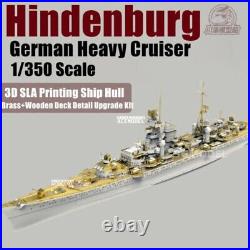
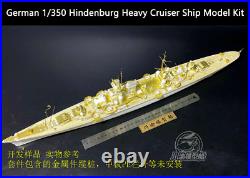
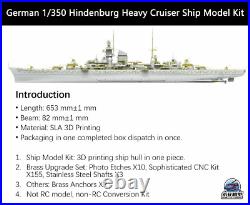
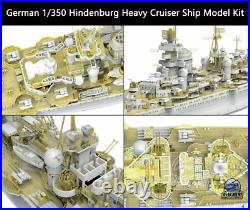
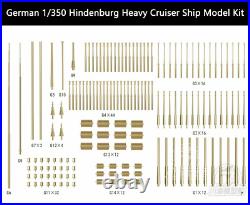
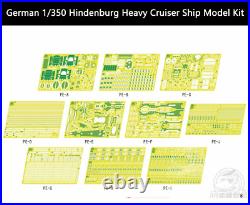
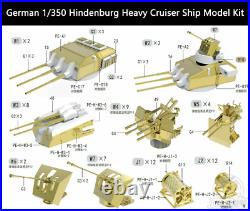

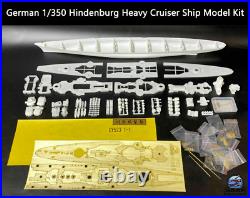
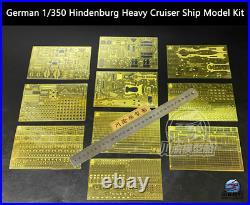
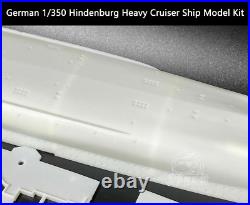
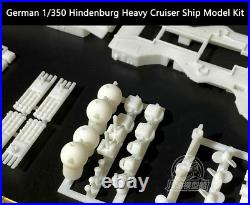

New: A brand-new, unused, unopened, undamaged item (including handmade items). 653 mm ± 1 mm. 82 mm ± 1 mm. A Set of Wooden Deckarrels. A Set of Masking Sheet. 3x Stainless Steel Boat Shaft. 155x Brass Precision Turned Parts(Gun Barrels+AA Gun+Mast+Jack). Due to the number of upgraded parts is ponderous, it may cause a leakage. Length: 653 mm ± 1 mm Width: 82 mm ± 1 mm. In order to modernize the navy, a generalized Plan Z was developed and approved in 1939. However, several alternative variants of this plan were considered and rejected, including some less ambitious and costly, but with more realistic and promising results in a shorter term. The cruiser component of Plan Z consisted of 5 Admiral Hipper-class heavy cruisers and 12 Project P ironclads. The latter were the development of Deutschland-class “pocket battleships, ” with a displacement of 25,500 tons, six 280-mm guns, and diesel power plants. It’s probable that this plan could have allowed for the evolution of the fascinating German cruisers of the 1930s, which had been designed under the restrictions of the Washington Naval Treaty. German engineers had two possible paths ahead of them. The first was to further modernize the “pocket battleships, ” which would later result in Projects D and E, and in turn led to the creation of P-class. They had quite a few shortcomings, but their layout, specifications, and equipment became the basis for the development of cruisers around the world. They managed to anticipate the main trends that would emerge, including more sophisticated fire control and high versatility. In 1938, these traits were real prerequisites for the continued construction of cruisers carrying 203-mm artillery. The swiftly growing Kriegsmarine and its evolution highlighted the names of two significant Germans-Albrecht von Roon and Paul von Hindenburg. The main battery turrets had a classical layout: two turrets on the aft and two on the bow, one behind and slightly higher the other. The broadside weight of 8,052 kg unleashed by SK C/34 guns made it a deadly enemy for cruisers that were built in the time of the Washington treaty. The cruiser was well equipped with dual-purpose artillery-carrying eight Dop. C/37 mounts with sixteen 105-mm SK C/33 guns. Unfortunately, Germans didn’t manage to develop a system of centralized target acquisition for these guns, and despite great ballistic characteristics, the fire efficiency was lower than expected. The mount was aimed and tracked targets with the help of two optical sights, one for training and the other for elevation. Shell traces were used to assist with adjusting fire. The rest of the small-caliber AA artillery included four coaxial 20-mm Flakzwilling 38 autocannons and nine quadruple Flakvierling 38 autocannons. Small-caliber mounts didn’t have central fire control-German antiaircraft gunners preferred to fire at multiple targets simultaneously, which is why it was battery commanders responsible for fire control. Hindenburg had the same aviation armament as Prinz Eugen-three Arado 196 floatplanes. Two were stored in a hangar with a sliding roof, while the third one stood combat-ready on the catapult under a cover. Remote districts need more time. Please don’t make the order if you don’t want to wait. Rarely happens delay, but the weather, custom clearance, holidays, political and society situation, etc effect it. Our company is a leading wholesaler, exporter, and dropshipper of many types of accessories for pet supplies (directly from factories). We believe that e-commerce greatly breaks the geographical barrier by bringing large and small companies closer together in a very positive way. By combining e-commerce technologies and traditional large volume import/export business models, worldwide business is great for all economies. A customer service assistant will reply within 12 hours to help with any concerns and offer you our best solutions. Our aim is to provide Top Level Customer Service, so we will try our best to solve any problem. We do not work holidays in Hong Kong. This item is in the category “Collectibles\Transportation\Boats & Ships\Military\Models”. The seller is “zhanglanying6182″ and is located in this country: CN. This item can be shipped worldwide.

